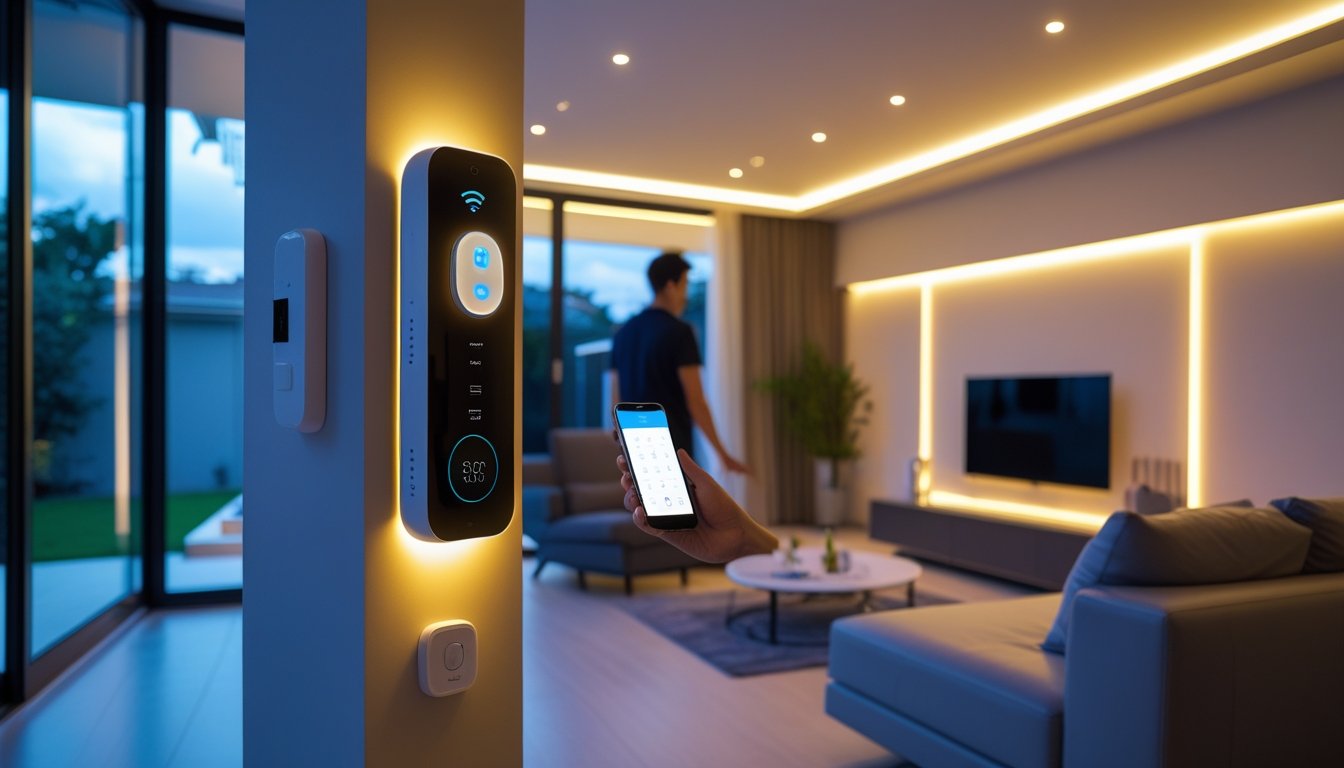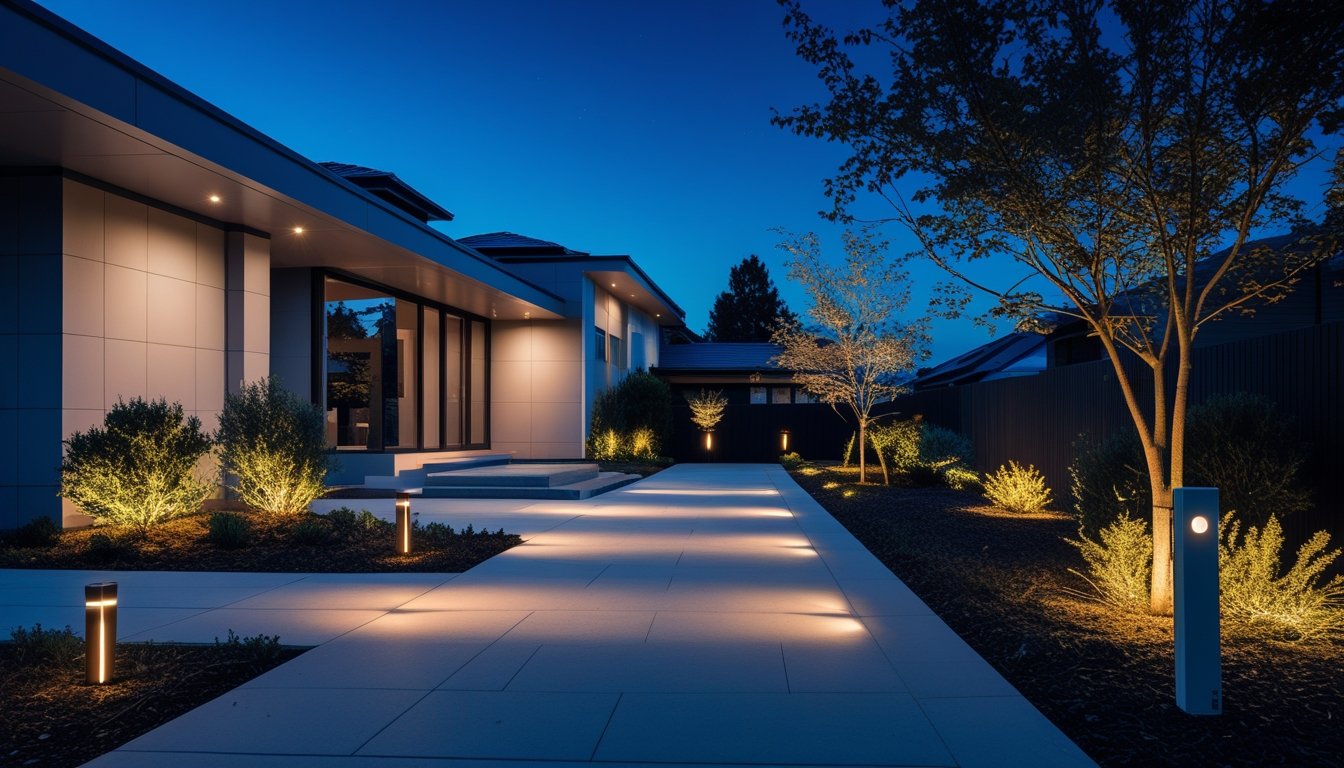Late updated: 10 May 2025 11:05
Written by: Elena Prescott
Enhancing Home Security With Modern Lighting Solutions: Key Strategies for Safety
In today's world, ensuring the security of our homes is a top priority. Advances in lighting technology have paved the way for innovative home security solutions that are not only effective but also energy-efficient. By incorporating modern lighting solutions, we can deter potential intruders, improve visibility, and enhance overall peace of mind.

Modern lighting options, including LED and smart systems, offer a range of features that boost home security. These systems provide bright illumination, motion detection, and can be controlled remotely, offering both convenience and enhanced safety. Our exploration of these technologies reveals their potential to transform how we secure our living spaces.
As we look into the integration of these advanced lighting solutions, it's crucial to understand their practical applications. By adopting smart lighting, homeowners can manage their security better while enjoying the efficiency and durability these systems offer. The evolving landscape of home security brings exciting possibilities, giving us more control over our safety.
Key Takeaways
- Modern lighting improves home security and visibility.
- Smart lighting offers remote control and motion detection.
- Advanced solutions provide efficient and durable security.
Modern Lighting Solutions for Superior Home Security
Enhancing home security with modern lighting involves strategic use of smart technologies. By integrating smart lighting systems with security mechanisms such as sensors and smart locks, we can bolster safety and convenience. These solutions offer automated responses and can be remotely controlled, adding a robust layer of security to our homes.
Role of Smart Lighting in Enhanced Protection
Smart lighting systems offer convenience and security by allowing us to control our home lighting remotely. This is crucial when we are away, giving the appearance that someone is home and thus deterring potential intruders. These systems can be operated via smartphones or voice assistants, simplifying the process of adjusting lights as needed.
Additionally, smart bulbs can work in tandem with other security devices, synchronising lighting with alarms or video doorbells. This integration enhances home security by triggering lights in response to specific events. For example, sudden illumination can alert us to a security breach, serving as both a warning and a deterrent to potential intruders.
Integration With Security Devices
Integrating lighting with other security measures strengthens our defence system. Smart lighting can seamlessly integrate with smart locks and surveillance cameras. This allows lights to activate when surveillance cameras detect movement, or when smart locks are engaged or disengaged, providing valuable visual cues during a security breach.
Moreover, syncing lighting with alarm systems enhances responsiveness. A sudden burst of light alongside an alarm can increase the chances of deterring an intruder. This integration allows us to monitor and react to events through a single platform, improving overall safety and convenience in home management.
Motion Sensors and Automated Responses
Motion sensors have become a cornerstone of home security, particularly when paired with lighting. These sensors detect movement and activate lights promptly, illuminating areas and potentially startling intruders. This automated response doesn’t just highlight an anomaly, but also enhances our peace of mind by boosting security visibly and demonstratively.
Moreover, the automation capability ensures that lights function as a proactive measure. They operate without requiring manual intervention, reacting to movements and maintaining vigilance even when we aren't actively monitoring the premises. This effective use of motion sensors provides an elevated level of access control and monitoring, reinforcing our home security strategy.
Smart Technology and the User Experience

Modern smart technology is revolutionising the way we interact with our homes, making security systems more intuitive and accessible. From enhancing energy efficiency with automated lighting systems to providing seamless control with voice and remote options, smart home ecosystems continue to improve the user experience.
Smart Home Ecosystems and Connectivity
Smart home ecosystems integrate various devices into a cohesive network, allowing users to manage their home environments efficiently. By leveraging platforms like Google Home, Amazon Alexa, and Apple HomeKit, we can ensure seamless connectivity. These systems often use the Internet of Things (IoT) to communicate, coordinating between devices such as smart lighting, thermostats, and security cameras. A smart home hub serves as a central point, streamlining control and ensuring all components work in harmony. This interconnectedness provides a more intuitive and automated environment, enhancing convenience and security.
Voice and Remote Control Options
Voice control, facilitated by virtual assistants like Amazon Alexa and Google Home, allows users to operate devices hands-free. We can easily adjust lighting, lock doors, and monitor security through simple voice commands. Remote control options extend this flexibility, enabling device management via smartphones or tablets, even when away from home. This level of accessibility not only enhances user experience but also contributes to better home security. Features like vacation mode use programmed schedules to simulate occupancy, adding an extra layer of security when we're away.
Energy Efficiency and Sustainable Practices
Smart home technology plays a significant role in promoting energy efficiency. By automating functions such as lighting and climate control, we can reduce energy consumption significantly. Energy-efficient lighting, including LED-based systems, is often incorporated into these setups. They not only lower energy use but also enhance sustainability. Advanced energy management systems analyse usage patterns and adjust settings to optimise energy performance. These sustainable practices offer benefits like reduced utility bills and a smaller carbon footprint, making the adoption of smart technologies both eco-friendly and economically beneficial.
Convenience Features for Everyday Living
Smart home technology focuses heavily on user convenience, which is evident in features like automated routines and integrated systems. The ability to set scenes or modes, such as morning or night settings, allows us to quickly adjust the environment to suit our needs. Timed lighting systems offer precision control, aiding in both daily routines and security measures. Voice assistants facilitate day-to-day tasks, from adjusting lighting to relaying security alerts. By simplifying home management, these features save time and provide peace of mind, greatly enhancing the overall living experience.
Frequently Asked Questions

Exploring modern lighting solutions for home security involves a variety of technologies and strategies. These range from integrating smart lighting with alarm systems to optimising lighting for enhanced camera performance. Let's look into these aspects in more detail.
What are the most effective types of security lighting for deterring intruders?
Bright exterior lighting such as floodlights and pathway lights play a significant role in deterring potential intruders. Their visibility often discourages criminal activity. LED lights are also effective due to their brightness and energy efficiency.
How can smart lighting systems be integrated with home alarm systems for improved security?
Smart lighting systems can be synchronised with home alarms. By connecting lights to an automated system, alarms can trigger lights when motion is detected, offering a dual deterrent effect. This integration can be managed through a central smart home hub.
What are the benefits of motion-activated lights in home security setups?
Motion-activated lights provide immediate illumination when movement is detected, startling intruders and alerting homeowners. This reduces energy consumption as the lights only activate when needed. The sudden light can also prompt neighbours to notice unusual activity.
Can outdoor lighting be optimised to enhance surveillance camera performance?
Proper placement and angle of outdoor lighting can significantly improve the clarity of surveillance footage. Lights should be positioned to avoid glare on cameras, providing clear visibility without obscuring important details.
How does the placement of lighting affect the overall security of a property?
Strategic positioning of lights can eliminate dark corners and shadows where intruders might hide. Pathways, entrances, and blind spots should be well-lit to increase visibility and reduce potential security risks.
What are the latest advancements in security lighting technology?
Recent advancements include smart bulbs with customisable settings, solar-powered options for energy efficiency, and integration with AI-powered surveillance systems. These technologies offer greater control and adaptability for homeowners seeking to enhance security.
